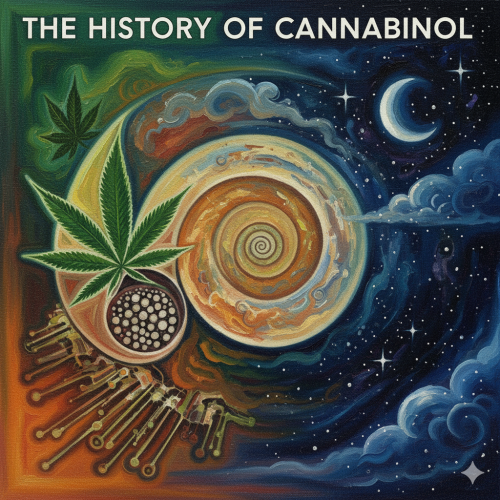In the ever-evolving landscape of cannabis science and consumer understanding, a term that’s gaining increasing prominence is TAC, or Total Active Cannabinoids. While THC and CBD have long dominated the conversation, TAC offers a broader perspective on the chemical richness and potential effects of cannabis products.
Understanding Total Active Cannabinoids requires a journey through the history of cannabinoid research, a clear definition of what it encompasses, and an appreciation for its significance in today’s cannabis market.
The Historical Context: Beyond Single Molecules
The early days of cannabis research largely focused on isolating and understanding individual cannabinoids, with THC taking center stage due to its psychoactive properties. Scientists diligently worked to identify, isolate, and characterize compounds like CBD, CBN, and CBG. This reductionist approach was crucial for understanding the fundamental effects of each molecule.
However, as research progressed, a more holistic view began to emerge. The concept of the “entourage effect,” suggesting that the combined action of various cannabinoids and terpenes could produce effects greater than the sum of their individual parts, gained traction. This shift in perspective paved the way for the increasing relevance of metrics like Total Active Cannabinoids.
Initially, cannabis testing often highlighted only the primary cannabinoids, particularly THC and sometimes CBD. However, as analytical techniques became more sophisticated and consumer awareness grew, the limitations of focusing solely on one or two compounds became apparent. Patients and recreational users alike began to seek a more comprehensive understanding of the chemical profile of their cannabis products. This demand for transparency and a more complete picture of the active components fueled the adoption of TAC as a valuable metric.
Defining TAC: More Than Just THC
So, what exactly is Total Active Cannabinoids? Simply put, TAC represents the total percentage by weight of all identified and quantified cannabinoids in a cannabis product that are considered “active.” This typically includes the major cannabinoids like THC (delta-9-THC and sometimes THCA, which can be converted to THC), CBD (CBD and sometimes CBDA), as well as other minor cannabinoids such as CBG, CBN, CBC, and THCV, among others. The specific list of cannabinoids included in the TAC calculation can sometimes vary slightly depending on the testing laboratory and regulatory requirements.
It’s crucial to understand that TAC is not a single compound itself, but rather a summation of the concentrations of multiple individual cannabinoids. Think of it as a measure of the overall cannabinoid potency of a product. A high TAC value indicates that the product contains a significant amount of active cannabinoid compounds, regardless of the specific ratio of those compounds.
The Significance of TAC in Today’s Cannabis Landscape
The increasing emphasis on TAC reflects a growing understanding of the complex interplay of cannabinoids and their potential effects. TAC is becoming an increasingly important metric.
With a more complete picture of potency, the THC percentage remains a key indicator of psychoactive potential. However, TAC offers a more holistic view of the overall potency and potential effects of a product. A product with a lower THC percentage but a high TAC might still offer significant therapeutic benefits due to the presence of other active cannabinoids working in concert.
TAC acknowledges the potential synergy between different cannabinoids. By considering the total active cannabinoid content, consumers and researchers can better appreciate how the combined presence of various compounds might contribute to the overall experience and therapeutic outcomes.
Moreover, providing TAC information empowers consumers to make more informed decisions. Individuals seeking specific therapeutic benefits from minor cannabinoids like CBG or CBN can use the TAC value to gauge the overall presence of these compounds in a product. And, as the cannabis industry matures, standardized testing and labeling become increasingly important. TAC provides a valuable metric for quality control, ensuring that products consistently meet the cannabinoid content levels.
For researchers, Total Active Cannabinoids offers a more comprehensive dataset for studying the effects of cannabis. Analyzing the total active cannabinoid profile, rather than focusing solely on THC or CBD, can lead to a deeper understanding of the complex pharmacology of cannabis.
Navigating TAC on Product Labels
When examining cannabis product labels, you’ll often find the THC and CBD percentages listed prominently. Increasingly, you’ll also see a TAC percentage. It’s important to understand how this number is derived. Typically, laboratory testing will quantify the individual cannabinoids present in a sample. The TAC is then calculated by summing the percentages of these identified active cannabinoids.
It’s worth noting that some labs might also include precursor cannabinoids like THCA and CBDA in their TAC calculation, often after applying a conversion factor to estimate the amount of active THC and CBD that would be present after decarboxylation (the process of heating cannabis, which converts these precursors into their active forms). Understanding how a specific lab calculates TAC can provide further clarity when comparing different products.
The Future of TAC: Embracing the Complexity
As cannabis research continues to advance and consumer understanding deepens, the importance of TAC is likely to grow. It represents a move away from a singular focus on THC towards a more nuanced appreciation of the complex chemical composition of the cannabis plant.
By considering the total active cannabinoid content, we gain a more comprehensive understanding of the potential effects and benefits of cannabis, paving the way for more informed choices, standardized quality control, and more insightful research into this multifaceted plant. TAC, therefore, is not just a number on a label; it’s a symbol of the evolving understanding and appreciation for the intricate world of cannabinoids.



